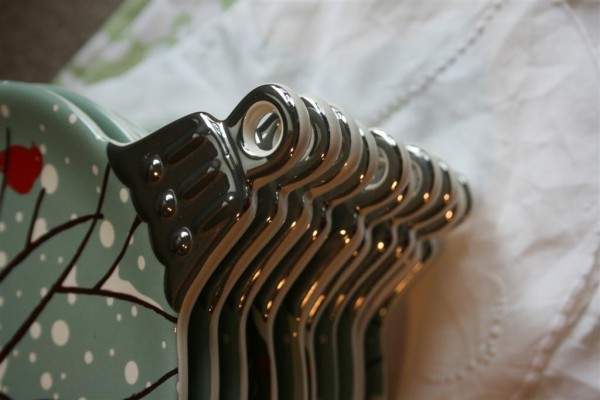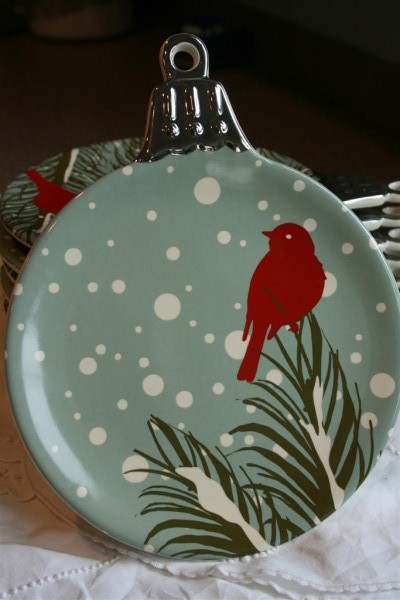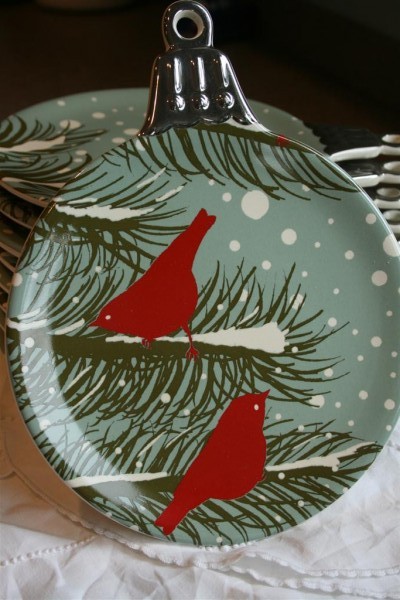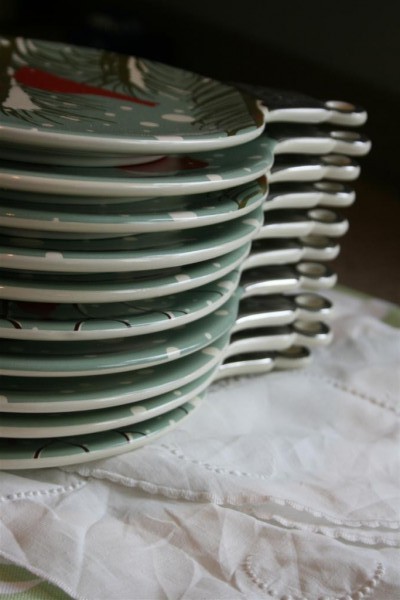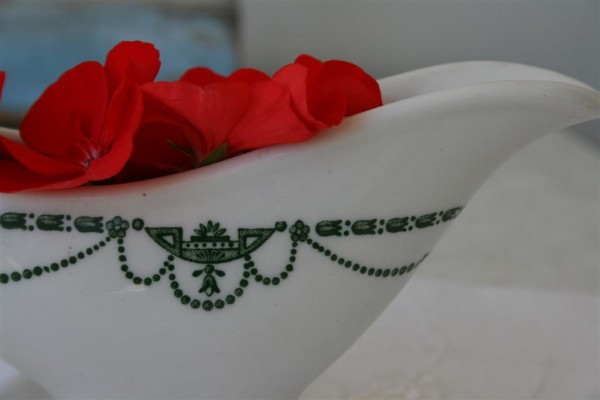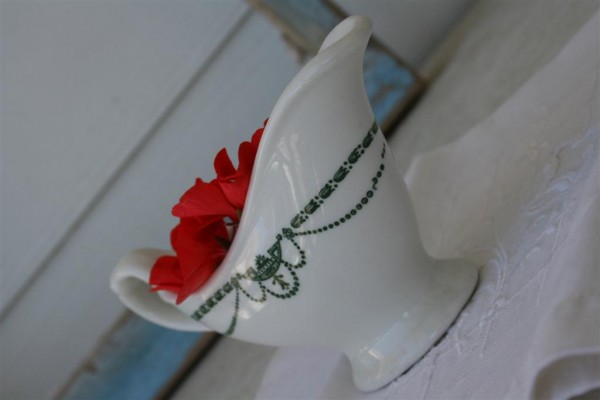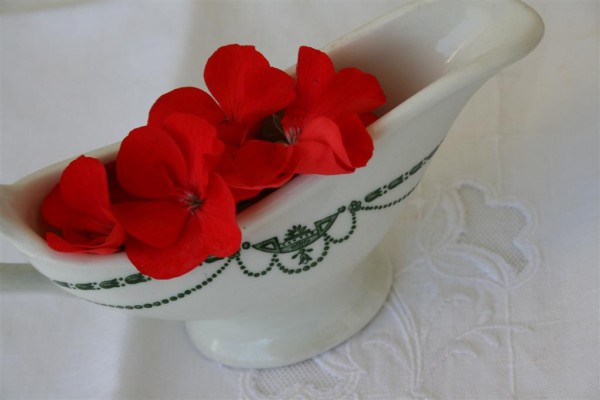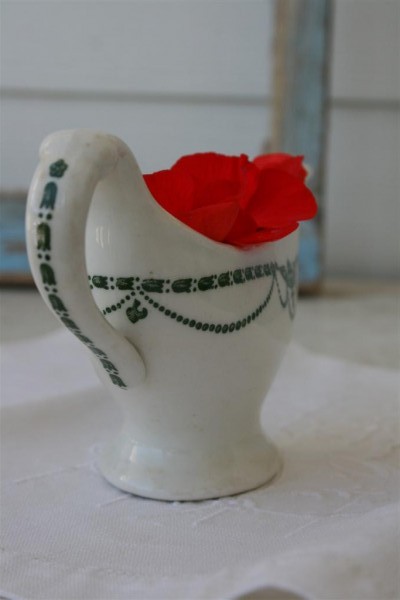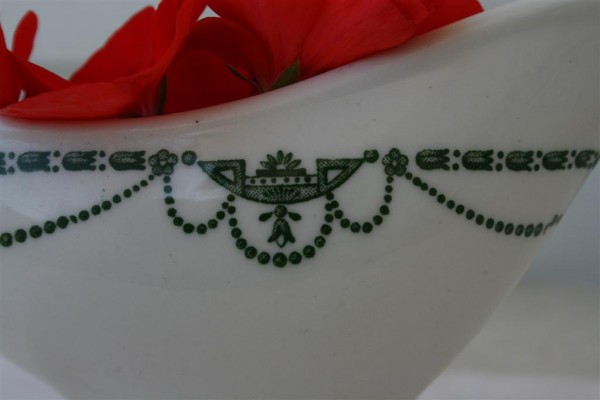Last night I made a quick trip to my local thrift store looking for something specific. Naturally, I didn’t find it, but I did find this:
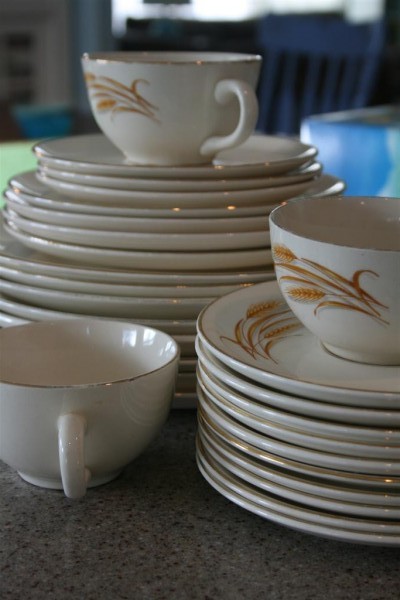
It was the pattern that made me stop. A picture of golden wheat on each plate:
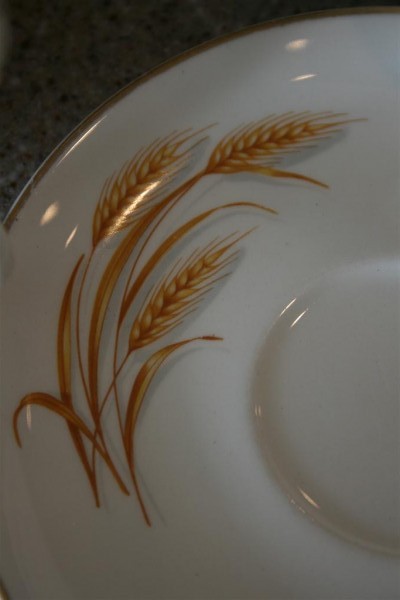
My mind’s eye automatically pictured a few treasured pieces of vintage Madeira linen I had at home.
This wheat pattern I have in a set of four placemats. The detail on them is intricate and lovely. I marvel that someone spent countless hours placing each stitch by hand.
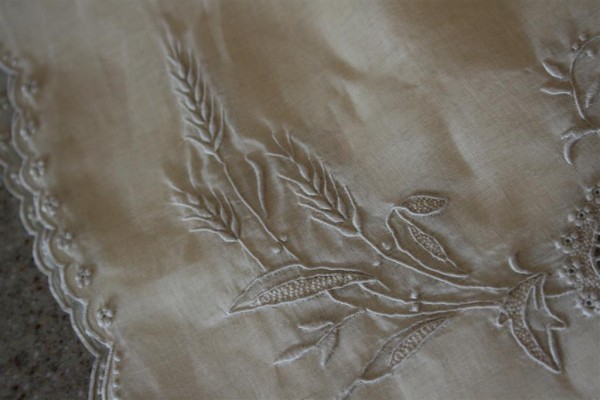
But this is the piece the china reminded me of most. A Marghab piece in the New Wheat pattern. Breathtaking.
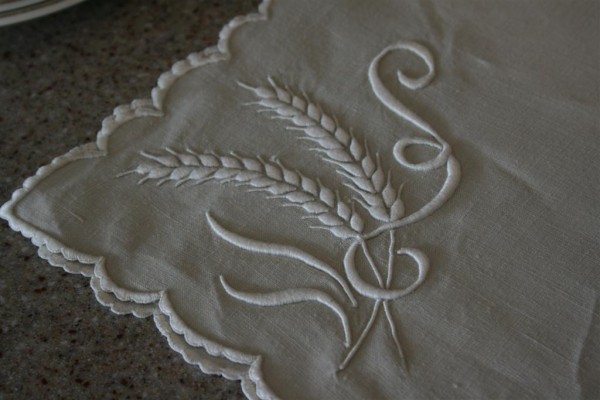
In my ultimate Thanksgiving dreams I would have 30 of these placemats to serve Thanksgiving dinner on. The pattern is so simple and sophisticated. I love it.
And so I stood there, pondering the china, reflecting on the timeless symbol of golden wheat and how aptly it communicates appreciation for simple things: for sustenance, for harvests, for the beauty of the earth. I turned one over.

22 karat gold! Usually I’m not interested in gold, but my heart quickly made an exception. I counted the pieces. Twenty-eight in all. Twenty-eight pieces of china for $18. They came home with me.
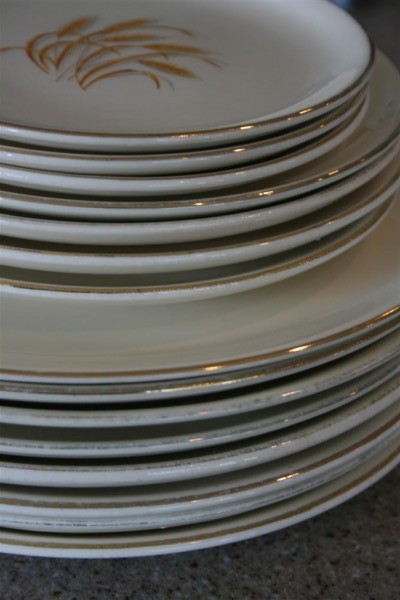
Later that night I stood at my kitchen sink and carefully washed each piece. I noticed how the gold has largely washed off many of the dinner plates, leaving only a hint of the shine that once graced each rim. I noticed stains on a few, and scratches on the wheat image in some places. I couldn’t help but wonder about whose Thanksgiving table was graced, obviously many times, with these beautiful pieces. I wondered at the memories the plates held, the family recipes they’ve seen, the conversations held around that table.
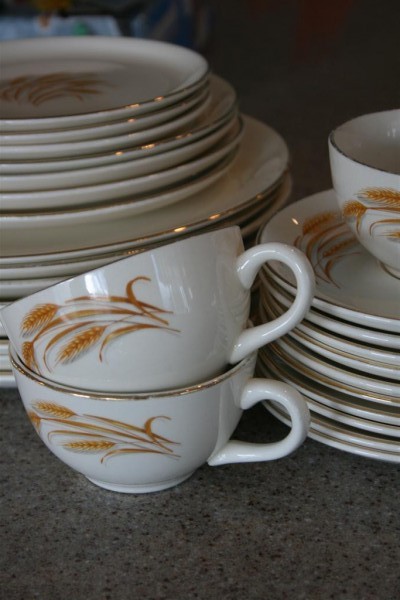
Part of me felt sad for whatever twist of fate sent this lovely stack of dishes to the thrift store. Did someone pass away? Did enough of them finally break that they no longer were used? Why did no one want them?
My sister-in-law serves Thanksgiving dinner on her grandmother’s china. Each year they are carefully washed by hand and stored lovingly. I watch this ritual take place in honor of a wonderful woman, and feel a twinge of envy that no such heirloom will ever be mine. I envy the act of remembrance it represents, not the dishes. I look at my newly acquired china and wonder why no one wished to do the same with it.

I wish to.
My heart whispers a silent “thank-you” for the twist of fate that brought this treasure to my home, for the chance to use them tomorrow. There aren’t enough for the large group we’re expecting, but we will use them for dessert. The thought makes me smile. It means that tomorrow night I get to stand again at my kitchen sink to carefully wash them as I reflect on the memories of the day. Tomorrow these plates begin a new journey, gathering memories at my kitchen table to be carefully stored away until next year.
The thought makes me smile. And would you believe there’s even sunshine outside?
Life is good.
Jennifer
